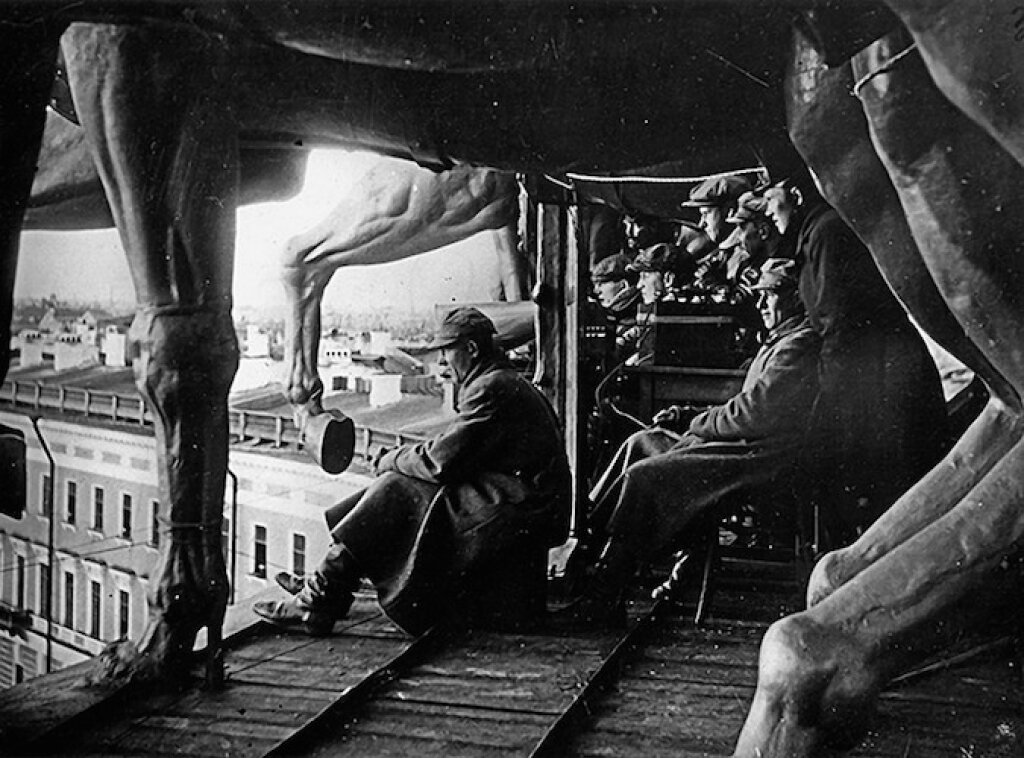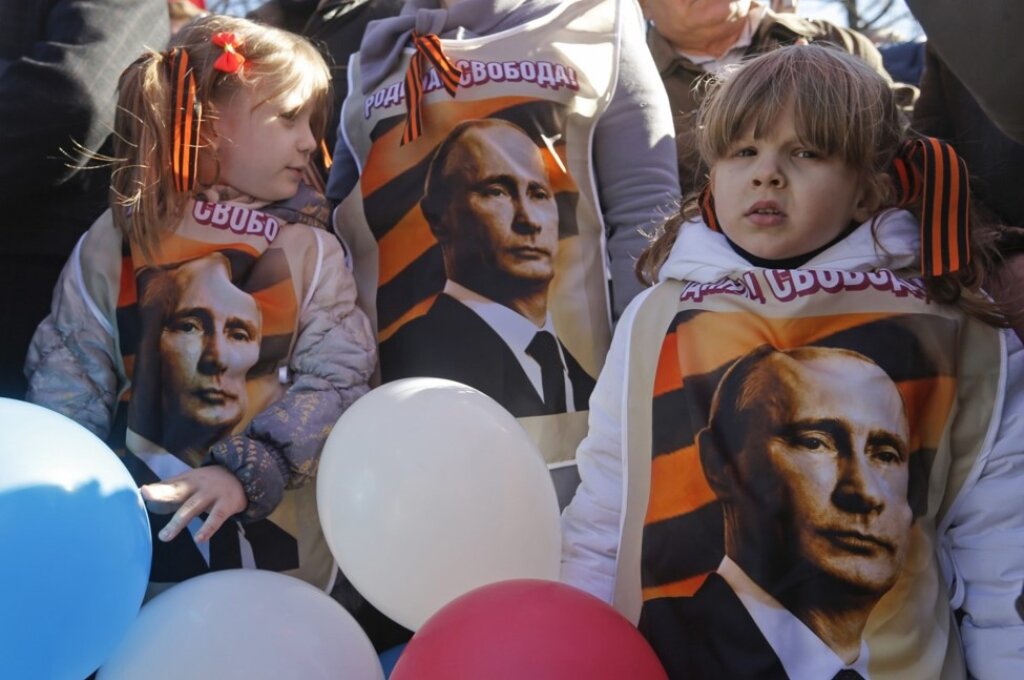Watch the video of the event here
On November 4, 2016, the Jordan Center for the Advanced Study of Russia at NYU welcomed Ilya Budraitskis for a lecture entitled, “The 1917 Anniversary: Understanding or Conciliation?” Rossen Djagalov, Assistant Professor of Russian and Slavic Studies at NYU, introduced Budraitskis, who is a historian, political writer and art curator, known for his work on the editorial board of Moscow Art Magazine, Openleft.ru and LeftEast.
Budraitskis centered his talk on what the upcoming centennial of the 1917 Russian Revolution will mean for contemporary Russia, and more broadly, how history is used to justify the current state of affairs in the country. He mentioned the recently inaugurated statue of controversial Russian historical figure Ivan the Terrible in the city of Oryol, adding that “there are many, many monuments which [are used to] somehow explain the continuity of Russian history and explain the current moment.” In the absence of a coherent ideology of the Russian state, Budraitskis said, “history works as ideology” and as “an explanation of reality.” The concept is related to one presented by Karl Marx: “ideology is the pure organization of today’s reality and it is a presentation of what could be identified as an eternal present.”
To illustrate his point, Budraitskis pointed to a Russian multimedia exhibition called “Russia – my history.” “The main idea of this exhibition is to present continuity between the dynasties, between different forms of the state, which somehow overcome any kind of ruptures, any kind of contradictions inside national history,” Budraitskis said. For him, the exhibit is a kind of metaphysical body that represents Russia, a national body which has reproduced itself in different forms over the centuries. In theorist Walter Benjamin’s terms, this is the concept of “empty time”—that is, the continuation and reproduction of heroes, rulers, science and external changes, as well as the unity of the state and its people in spite of external influence. But “eternal Russia” is also an idea specific to the current iteration of Russia: “You can say that in this exhibition, you can find the pure essence of Putinist idea of history,” Budraitskis said.
Because inserting revolution into a narrative of “eternal present” is inherently contradictory, Budraitskis questioned the place of the revolution in this narrative of “eternal Russia.” “The simple answer is that there is no place for the [1917] revolution,” he said, “because revolution, in the story of any country, is something that breaks the pacifying picture of the continuity of national history,” which is a myth itself. On the other hand, Budraitskis said that one can’t simply expel the 1917 revolution from the national narrative. “Of course, the [1917] Russian Revolution should connect the pre-revolutionary epoch and the post-revolutionary epoch and [it is] something that should be included in the [concept] of the eternal present,” he said.
In turn, Budraitskis mentioned two concepts that exist in the contemporary Russian public sphere that explain the contradictions of the present moment through history. The first is a statement by the Russian Minister of Culture, Vladimir Medinsky, who said that the “real winner of the Russian Civil War” was not the whites or the reads, but “historical Russia.” It was Medinsky’s idea to create a new monument in now-annexed Crimea—where the Russian Civil War ended—in preparation for the 1917 revolution’s centennial. Through Medinsky’s eyes, “historical Russia [...] existed and survived and reproduced in spite of political and social struggles,” Budraitskis said. After outlining the state’s efforts on the eve of the anniversary, he then focused on the liberal vision of decommunization—“the idea that we [Russians] have some obstacles, some ghosts from the past, which prevents us on our way to prosperity, democracy [and] global consensus,” Budraitskis said. In fact, the 2016 platform for the Yabloko Party promoted the idea that “Russia should overcome Stalinism and Bolshevism as profoundly and responsibility as it carried out Denazification after World War II.”
Budraitskis broadened the discussion of the 1917 revolution to the global context. The idea of “historical Russia” traces back to an old conservative argument that emerged in reflection of the French Revolution by thinkers like Alexis de Tocqueville and Joseph de Maistre who considered the gap between revolutionary self-consciousness and the true meaning of the revolution. In other words, Budraitskis said, they believed in “the idea that the state, the social process and the political process have their own mind—something that exists totally separately from the consciousness of the concrete inhabitants of a historical epoch.” He added that if the French Revolution was the first global revolution and the 1917 Russian Revolution the second, the difference between the two events was that the Russian Revolution tried to analyze itself and predict its own fallibility. One aspect that made the 1917 revolution unique was that the state the Bolsheviks wanted to establish “would be a state which never before existed in human history, [...] a self-defined state,” Budraitskis said. “The historical chance for such a disappearance of the state is really quite small. It was a historical opportunity.”
In the Q&A session that followed, the audience asked Budraitskis to expand on his argument of historical continuity and the legacy of the 1917 revolution. “There is a continuity between the Russian empire and the Russian revolution” as well as with Putin’s policies today, one member of the audience said. “Why does the Russian state deny the legacy of the revolution?” In response, Budraitskis said that the 1917 revolution could not be normalized because it was the masses who overthrew the empire. “The self consciousness of the revolution was criminal [from the point of view of today’s Russian state],” so it cannot be included in the historical narrative.
The same can be said for why the state still maintains Lenin’s mausoleum, continued Budraitskis. In the eyes of contemporary Russian ideology, Lenin was “a criminal anti-state person who became a very important person for the state,” he said, but his victory was an irrational miracle of power. “If we try to rationalize it, [...] that will be a moment of breaking with [...] the concept of historical Russia” and it will “reproduce the red and white political struggle” of the civil war. In other words, any kind of interaction with the mausoleum would be something that undermines the “real genealogy” of the current Russian state.
Budraitskis also underlined another difference between the French and the Russian Revolution. Whereas after 200 years, the French Revolution is internalized and reproduces itself in the French public, Russian revolutionary “legacy is something that could undermine the current state of affairs,” he said. “I think any big anniversary like this [...] is a big historical moment in society. The way we can discuss [revolutions] is a political choice. The legacy of the Russian Revolution is not ready to be discussed on such a serious political and theoretical level.”



